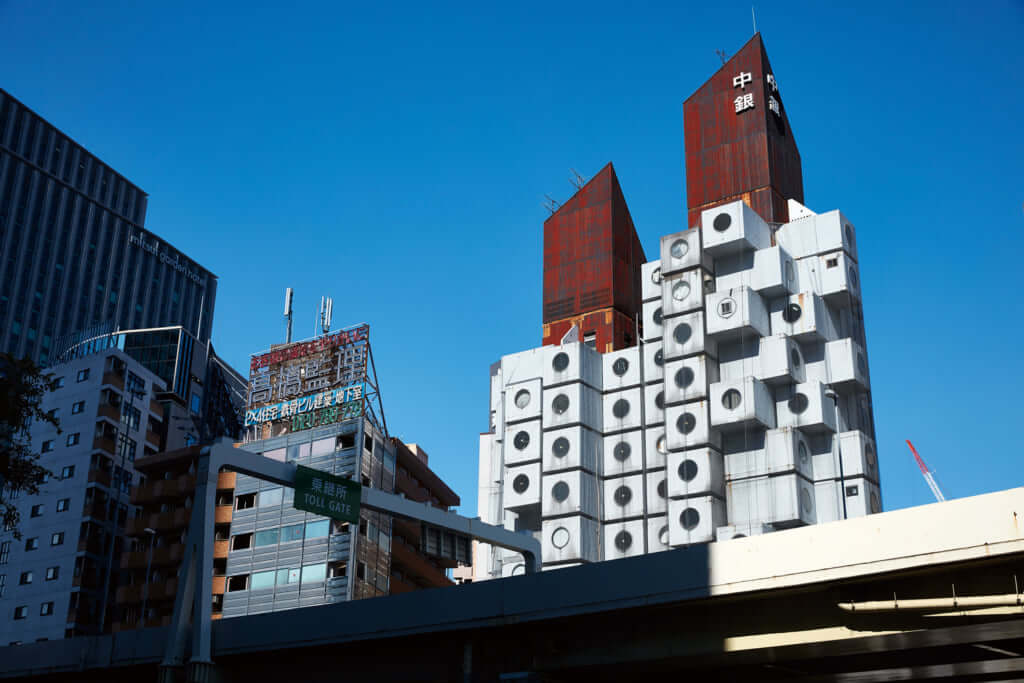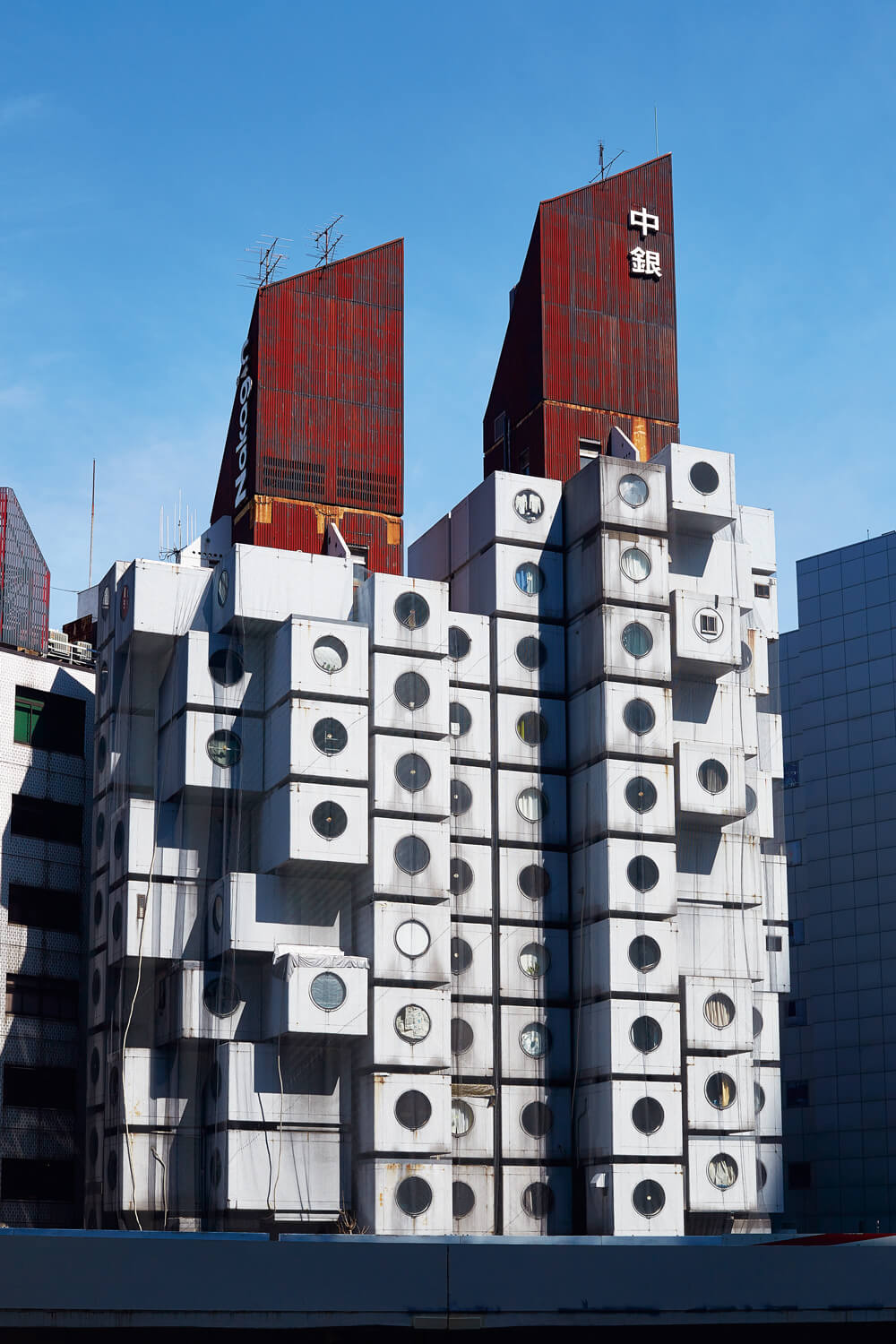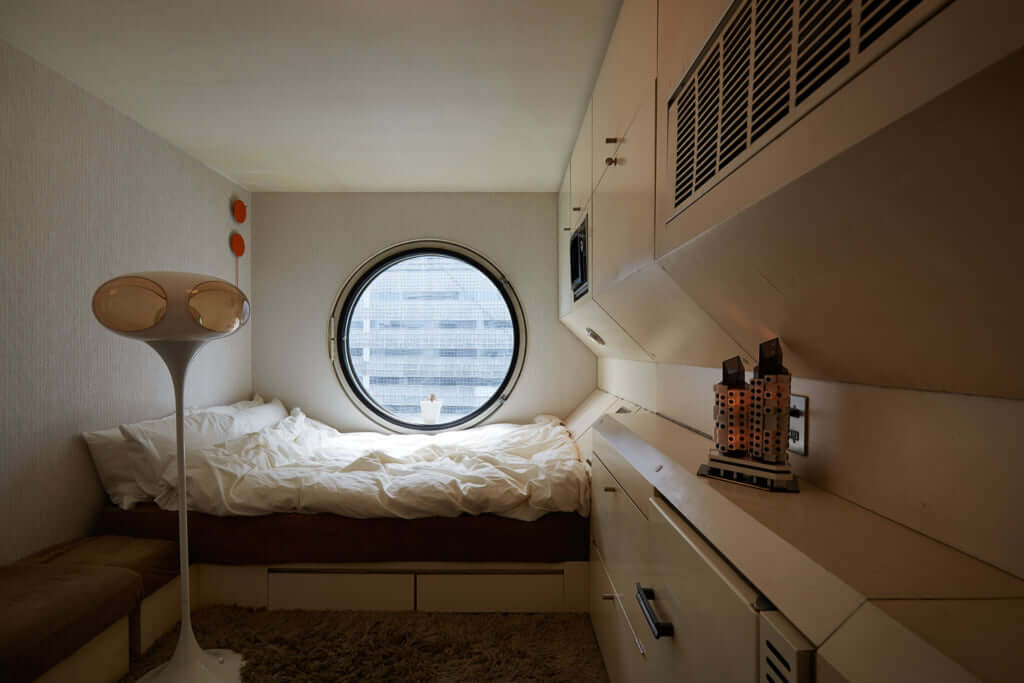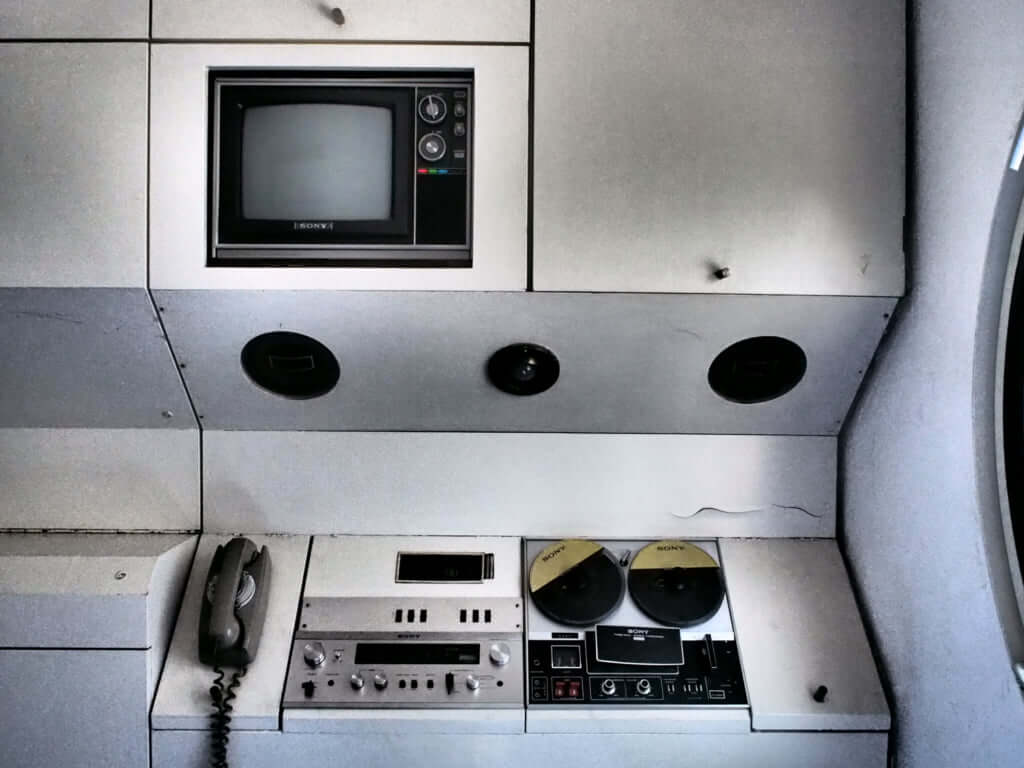Nakagin Capsule Tower, an Iconic Piece of Architecture Defying Opposition

Built in 1972, the Nakagin Capsule Tower has been fascinating people ever since, standing out against the urban landscape of Tokyo due to its original architecture and retrofuturistic aesthetic.
Located in Tokyo’s Shinbashi district, this building was designed by renowned architect Kisho Kurokawa, one of the pioneers of Metabolism, a movement of Japanese urban planners and architects who came together in 1959 to confront their vision of the city and its architectural evolution over time. The Nakagin Capsule Tower is one of the last emblems of Metabolism, intended to adapt to changes in society and meet the needs of its residents thanks to its prefabricated modular homes. Indeed, the structure comprises two reinforced concrete towers with 13 floors, where modular capsules are fixed and can be combined, for example to increase the amount of living space.
The building was initially admired by many workers who found it offered the comfort of home needed after a working day. However, it quickly fell into disrepair through a lack of maintenance. Although the architect demanded that the capsules be renewed, this work was deemed far too expensive.
Its location, just next to the chic Ginza district, where the price per square metre is the highest in all of Tokyo, attracts property developers, and Nakagin Capsule Tower has been under threat of destruction for several years now. Those who are passionate about this symbol of Metabolism are fighting this, however, by buying and renovating the capsules to turn them into offices, art galleries and primary or secondary residences. They also aim to have the building recognised by UNESCO as a cultural object.
Tatsuyuki Maeda, owner of several capsules, created a support group in 2014, in favour of the conservation and refurbishment of the tower. He also created Capsule Bank, a free system that links capsule owners and potential buyers. Saving the Nakagin Capsule Tower enables him to pursue his life’s dream: to continue living in his capsule. But for how long? This fight worthy of David and Goliath still has several obstacles to face: the building does not conform to security standards and risks crumbling with the slightest seismic shock.



TRENDING
-
A House from the Taisho Era Reveals Its Secrets
While visiting an abandoned building, Hamish Campbell discovered photographs the owner had taken of the place in the 1920s.

-
The Taboo-Breaking Erotica of Toshio Saeki
The master of the 1970s Japanese avant-garde reimagined his most iconic artworks for a limited box set with silkscreen artist Fumie Taniyama.

-
With Meisa Fujishiro, Tokyo's Nudes Stand Tall
In the series 'Sketches of Tokyo', the photographer revisits the genre by bringing it face to face with the capital's architecture.

-
Masahisa Fukase's Family Portraits
In his series ‘Family’, the photographer compiles surprising photos in which he questions death, the inescapable.

-
Hajime Sorayama's Futuristic Eroticism
The illustrator is the pioneer for a form of hyperrealism that combines sensuality and technology and depicts sexualised robots.





